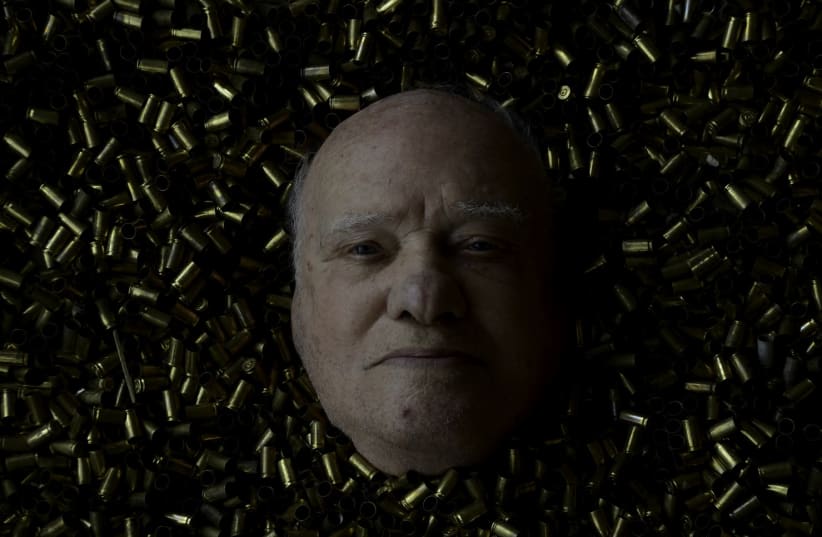An elderly man appears in a photo where his head is surrounded by bullets, as if he is swimming in a pool of ammunition. It turns out that this man is actually the last survivor of the Babyn Yar massacre and one of the principal personalities of a new exhibition displaying Holocaust survivors in a humane and creative way.
This photo of Michael Sidko is part of a new photography exhibition that will open at the German Embassy in Tel Aviv on Wednesday, titled Humans of the Holocaust.
The exhibition tells the extraordinary stories of 40 Holocaust survivors as well as second- and third-generation survivors. The exhibition engages viewers with the human stories behind every photo, and by extension, helps them to imagine the millions of untold stories.
Telling the story of the Holocaust for new generations
“I started the Humans of the Holocaust project after I saw a survey conducted by the Claims Conference that revealed that over two-thirds of millennials have never heard of Auschwitz, and that half could not name a single concentration camp or ghetto.”
Erez Kaganovits
“I started the Humans of the Holocaust project after I saw a survey conducted by the Claims Conference that revealed that over two-thirds of millennials have never heard of Auschwitz, and that half could not name a single concentration camp or ghetto,” explained Erez Kaganovitz, the photographer. “Those numbers send a shiver down my spine, and I realized that I have to do something in order to better inform and educate people about the universal lessons of the Holocaust.”
Kaganovitz realized that “we have to ignite a great spark of curiosity in those Millennials and Gen Zers when trying to better educate and inform them about the Holocaust,” and that is exactly what he’s trying to do in this project.
The stories that he’s collected are inspiring and optimistic, and they are portrayed in ways that are unexpected and moving.
“It has a global message where you don’t have to be Jewish in order to engage with it,” he said.
“It’s not a ‘classic Holocaust’ project, but rather a project that makes you want to engage with the human story behind it,” he continued. “It’s an optimistic project where you can see how the human spirit can overcome the direst of times.”
Sidko, the last survivor of the Babi Yar massacre, is quoted saying that “over the course of two days on September 29-30, 1941, Nazi Germany’s forces and Ukrainian accomplices massacred 33,771 Jews.” He added that among those massacred “were my infant brother Volodya, my baby sister Clara and my mother. Even though I was only six years old, I still remember every gruesome detail. I wish I didn’t but the sights, sounds and smell of gunpowder still haunt me to this day.”
Dugo Litner, a survivor of Auschwitz-Birkenau, was photographed posing with a yellow-colored balloon in the shape of a Jewish star, and the word “Jude” was written on it. Litner became famous in Israel, mainly among youngsters, since they annually celebrate the day he was freed from Auschwitz by eating a falafel, as he has been doing for decades. He is quoted in the exhibition saying that “I am taking ownership of the symbol that turned me into a subhuman and turning it into an optimistic and smiling creation.”
German Ambassador Steffen Seibert said that “with the last living survivors and witnesses of the Holocaust meanwhile at a very high age, we need to find new ways to engage the public and especially the younger generation. It remains our responsibility to preserve the memory of the past and to live by its lesson: that we all need to stand together and strengthen our societies and institutions in the fight against antisemitism and hatred.”
Seibert added that “when we speak of victims of the Holocaust, we speak of millions of individual human beings. Showing their faces and highlighting their individual life stories for the digital age is an innovative and fruitful contribution to this effort.”
The Humans of the Holocaust exhibition will open at the German Embassy in Tel Aviv, 2 Hashlosha St. (Entrance C), on April 19 at 12 p.m.













